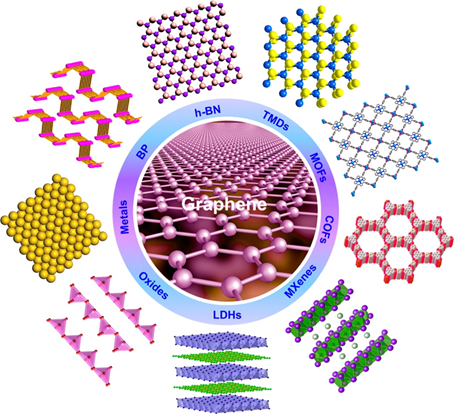What is 2D material?
QQ Academic Group: 1092348845
Detailed
Despite being just a single layer of carbon atoms, graphene sure can excite engineers and scientists. Unlike bulk graphite, the ultrathin material boasts flexibility, strength, and possibly enticing electronic properties for researchers to exploit in novel applications. Graphene mania crescendoed in 2010 when the material’s discovery was the subject of that year’s Nobel Prize in Physics. Since that time, researchers worldwide have been enthralled with vanishingly thin films and have succeeded in preparing a wide variety of so-called two-dimensional materials beyond graphene. This story is about those other 2-D materials. They hail from across the periodic table and include an assortment of transition metals, carbon-group elements, chalcogenides, and others. Researchers are taking this trip through the periodic table in search of the ultrathin because, like graphene, some of the materials they’re making sport impressive properties that surpass those of their thicker counterparts.

Zhang H. Ultrathin two-dimensional nanomaterials. ACS Nano. 2015, 9, 9451-9469.
reference:
Mitch Jacoby. 2-D materials stack up. C&EN, 2017, 95, 36–40.
- Previous: Two-dimensional nanoma
- Next: 1


 About us
About us